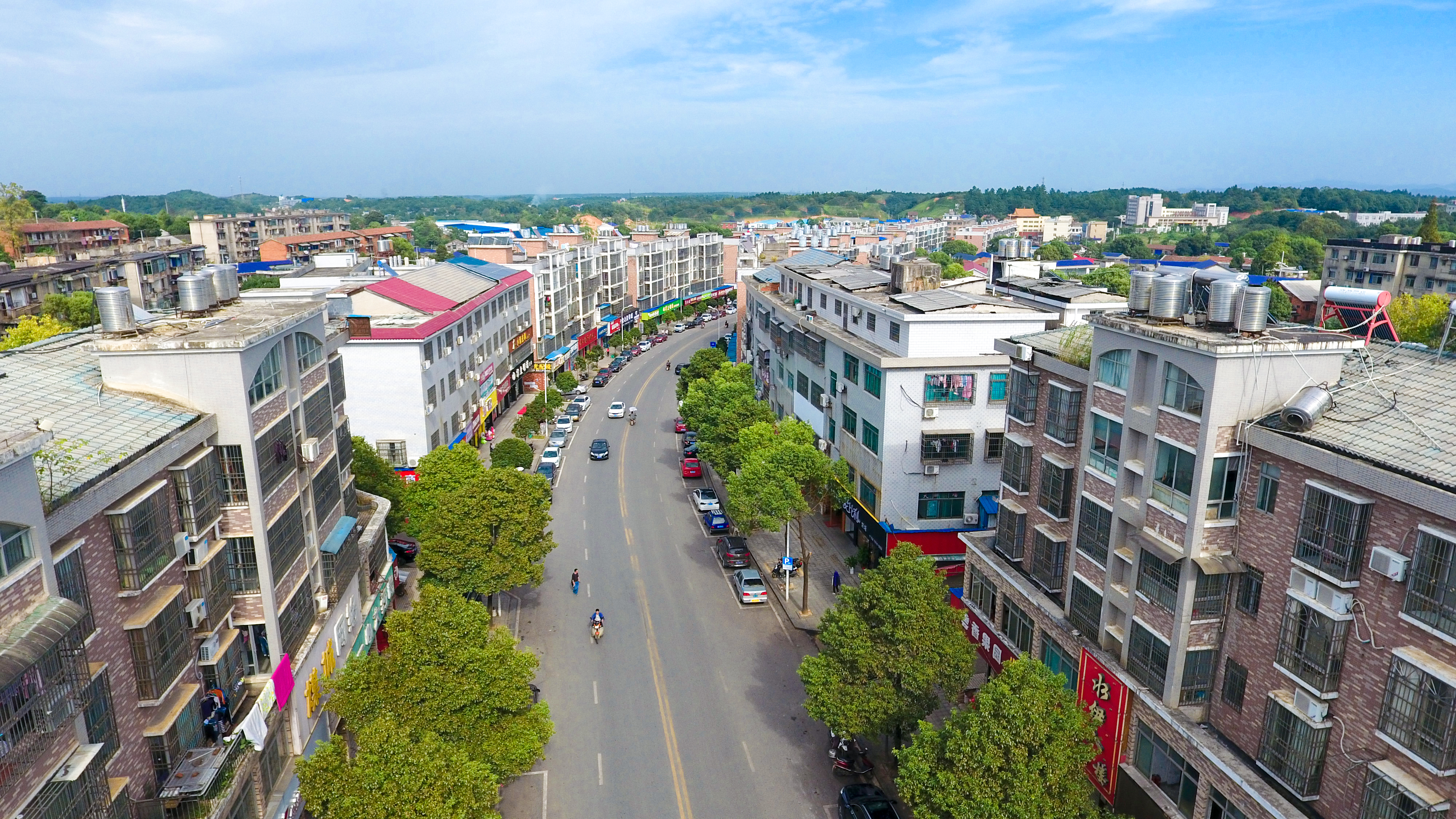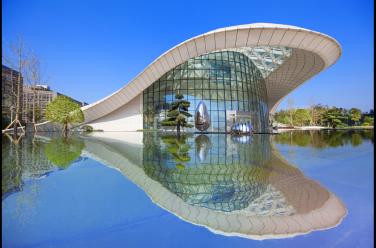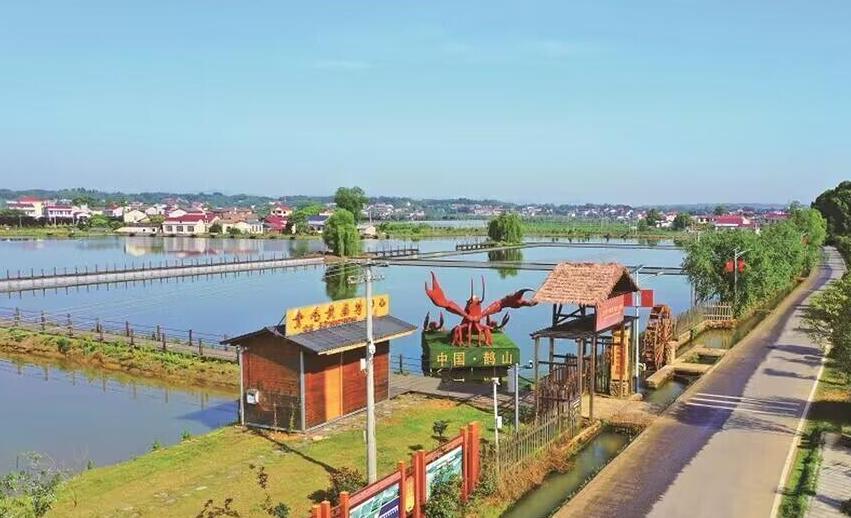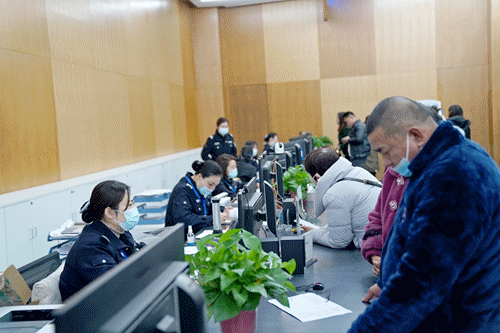'Four Treats' of Ningxiang – a tasty intangible cultural heritage
"Four treats" is a listed intangible cultural heritage of Ningxiang city. The four treats are Dao Dou Hua (sweet sword bean preserves), Sha Ren Gao (amomi fructus pastry), Su Mei Guo (green plum with purple perilla), and Bing Jiang (preserved ginger). These time-honored specialities made of local ingredients have found their way back into our lives.
As an old saying goes, "The mountain dwellers live from the mountain, and the shore dwellers live from the sea". Ningxiang people know for sure how to make the best of it! Optimizing the effect of wind, air, water and sunshine on ingredients, they have created four treats that put natural elements to good use.
These treats embody the wisdom of local people in allowing adaptations while following the rules of nature. In this thousand-year-old ancient town, local people know how to use every inch of the land to make a living. These treats or snacks give us a glimpse of mountain life with deep local imprints.
The old town and its specialties date way back.
Nowadays, so many cities look the same, with food being the only tag that distinguishes one from another. The "four treats" of Ningxiang are the essence of what the city has to offer.
For over a thousand years, Ningxiang has experienced changes to its administration; however, the overall coverage remained basically consistent. Ningxiang was part of Chuqian Mid Prefecture in the Spring and Autumn Period and the Warring States Period, part of Changsha Prefecture in the Qin Dynasty, and part of Xinyang County of Wu State during the Three Kingdoms Period (AD 220-280). It was renamed Xinkang in the first year of Taikang of the Jin Dynasty (280 A.D.), merged into Yiyang in the ninth year of Kaihuang of the Sui Dynasty (589 A.D.), and was transferred from Yiyang to Xinkang in the fourth year of Wude of the Tang Dynasty (621 A.D.). By the second year of the Taipingxingguo Period of the Song Dynasty (977 A.D.), some parts of Yiyang, Changsha and Xiangxiang had been merged into Ningxiang County, which then fell under the jurisdiction of today's Hengshi town and was re-established as Yutan Street Sub-district Office.
In view of these changes, there are no specific dates as to when the four treats were first created. However, they have no doubt shared a long history with the ancient town of Ningxiang. Like the town, the four snacks have maintained a special resilience and specific forms over the course of time.
Peng Xuehui, a successor of the four treats, said she could not put into words what makes them special, but she has mastered the skills to make them. The purple perilla used in Su Mei Guo is a special species only produced in Huaminglou town, as are the plums from Huangcai town and Zuta town. The ingredients of Dao Dou Hua come from townships across Ningxiang such as Jinghuapu, Batang, Shuangjiangkou and Tanshuwan. The ginger used in Bing Jiang is also a special early-maturing species from the foot of Weishan Mountain. One must be even more particular when it comes to making Sha Ren Gao, as a local early-season rice is the only viable option.
The four treats of Ningxiang preserve life and memories over the long years, and show how the locals have lived in harmony with nature.
They are unique for their homology of medicine and food. The traditional concept of dietary therapy is deeply rooted in making the treats, and is also partially attributable to the local climate. The therapeutic effect of these foods was discovered by the locals over a long course from their understanding of life. They learned how to put what nature has to offer to good use, always in awe of what they had been given.
Located in a typical hilly area, Ningxiang is surrounded by mountains in the north, west and south. In the southeast, there is a chain of undulating hills; in the north, an open area of hillocks; in the northeast, a low-lying flat area; and in the west, the Weishan Mountain region is the main part of the huge Xuefeng Mountains. To the east lies a transitional area between Xuefeng Mountain and the Binhu Plain in the northeast. Its average annual humidity is 81 percent. As Ningxiang boasts abundant resources in a humid and variable environment, the locals like to make treats matching the climate patterns.
Living in a place of heavy year-round rainfall, Ningxiang locals have found a way to work with sunshine, air and water in making treats. It is evident that all the four treats are made with special skills in close collaboration with weather patterns.
Ningxiang has an average of 1,739.2 hours of sunshine per year, particularly from April to November (lunar calendar): abundant sunlight becomes the best condition to make the four treats.
As an old saying goes, "The mountain dwellers live from the mountain, and the shore dwellers live from the sea". Ningxiang people know for sure how to make the best of it! Optimizing the effect of wind, air, water and sunshine on ingredients, they have created four treats that put natural elements to good use.
These treats embody the wisdom of local people in allowing adaptations while following the rules of nature. In this thousand-year-old ancient town, local people know how to use every inch of the land to make a living. These treats or snacks give us a glimpse of mountain life with deep local imprints.
The old town and its specialties date way back.
Nowadays, so many cities look the same, with food being the only tag that distinguishes one from another. The "four treats" of Ningxiang are the essence of what the city has to offer.
For over a thousand years, Ningxiang has experienced changes to its administration; however, the overall coverage remained basically consistent. Ningxiang was part of Chuqian Mid Prefecture in the Spring and Autumn Period and the Warring States Period, part of Changsha Prefecture in the Qin Dynasty, and part of Xinyang County of Wu State during the Three Kingdoms Period (AD 220-280). It was renamed Xinkang in the first year of Taikang of the Jin Dynasty (280 A.D.), merged into Yiyang in the ninth year of Kaihuang of the Sui Dynasty (589 A.D.), and was transferred from Yiyang to Xinkang in the fourth year of Wude of the Tang Dynasty (621 A.D.). By the second year of the Taipingxingguo Period of the Song Dynasty (977 A.D.), some parts of Yiyang, Changsha and Xiangxiang had been merged into Ningxiang County, which then fell under the jurisdiction of today's Hengshi town and was re-established as Yutan Street Sub-district Office.
In view of these changes, there are no specific dates as to when the four treats were first created. However, they have no doubt shared a long history with the ancient town of Ningxiang. Like the town, the four snacks have maintained a special resilience and specific forms over the course of time.
Peng Xuehui, a successor of the four treats, said she could not put into words what makes them special, but she has mastered the skills to make them. The purple perilla used in Su Mei Guo is a special species only produced in Huaminglou town, as are the plums from Huangcai town and Zuta town. The ingredients of Dao Dou Hua come from townships across Ningxiang such as Jinghuapu, Batang, Shuangjiangkou and Tanshuwan. The ginger used in Bing Jiang is also a special early-maturing species from the foot of Weishan Mountain. One must be even more particular when it comes to making Sha Ren Gao, as a local early-season rice is the only viable option.
The four treats of Ningxiang preserve life and memories over the long years, and show how the locals have lived in harmony with nature.
They are unique for their homology of medicine and food. The traditional concept of dietary therapy is deeply rooted in making the treats, and is also partially attributable to the local climate. The therapeutic effect of these foods was discovered by the locals over a long course from their understanding of life. They learned how to put what nature has to offer to good use, always in awe of what they had been given.
Located in a typical hilly area, Ningxiang is surrounded by mountains in the north, west and south. In the southeast, there is a chain of undulating hills; in the north, an open area of hillocks; in the northeast, a low-lying flat area; and in the west, the Weishan Mountain region is the main part of the huge Xuefeng Mountains. To the east lies a transitional area between Xuefeng Mountain and the Binhu Plain in the northeast. Its average annual humidity is 81 percent. As Ningxiang boasts abundant resources in a humid and variable environment, the locals like to make treats matching the climate patterns.
Living in a place of heavy year-round rainfall, Ningxiang locals have found a way to work with sunshine, air and water in making treats. It is evident that all the four treats are made with special skills in close collaboration with weather patterns.
Ningxiang has an average of 1,739.2 hours of sunshine per year, particularly from April to November (lunar calendar): abundant sunlight becomes the best condition to make the four treats.

 Ningxiang listed on China’s top 100 counties with comprehensive competitiveness
Ningxiang listed on China’s top 100 counties with comprehensive competitiveness  College welcomes a student of courage
College welcomes a student of courage  Changsha Blue Moon Valley Intelligent Home Appliances Industrial Town
Changsha Blue Moon Valley Intelligent Home Appliances Industrial Town  This is Ningxiang High-tech Zone
This is Ningxiang High-tech Zone 





